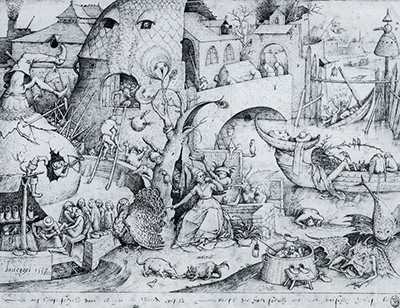Invidia translates as Envy and comes from the tales of The Seven Deadly Sins, allowing artist Bruegel to deliver a lesson in morality to those swayed by the achievements and wealth of others.
There is some ambiguity over the attribution of this artwork, with some arguing that the initial drawing was completed by Bruegel the Elder, whilst others placing it in the hands of an anonymous follower. There may also have been some involvement from Pieter van de Heyden, a notable local artist connected to the master. As with several other etchings, it is believed that the design was turned into an etching by skilled artist, Hieronymus Cock.
The engraving itself is dated at 1558, joining several pieces owned by the Metropolitan Museum of Art that were all around this time. The likelihood is that they purchased or were bequethed them by the same source in bulk. They may not even have been aware of the precise attribution at the time of purchase as many scientific methods now used for this purpose would not have been available at the time.
The scene here is also similar to some of the museum's other Bruegel designs, with chaos unsuing as a result of selfish behaviour and impure thoughts by the figures found in the picture. There is some writing at the bottom of the composition which aims to further outline the thoughts behind the artwork as Bruegel looks to improve the moral fibre of those local to him.
This attempt to guide morality has been seen in art for thousands of years though normally as a direct result of tackling a specific biblical tale. In that sense they would be purely depicting the original meaning where as here the artist is inmposing very much his own beliefs and using art to communicate it through symbolism.




